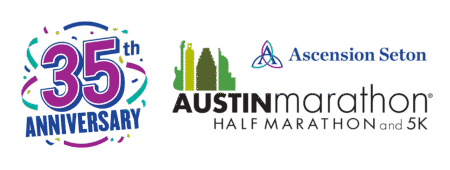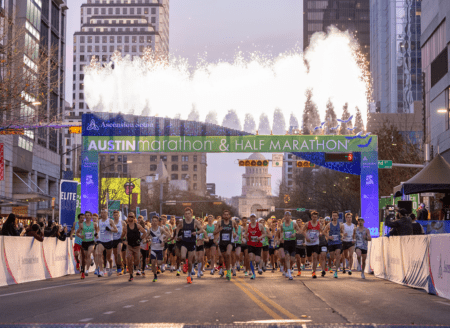The Best Coffee Shops in Austin
Of COURSE we love a good coffee shop — get it! Whether you’re meeting up with friends, fueling your day, or just craving a great cup of joe, Austin has no shortage of top-notch coffee spots perfect for runners. Here are some of our favorite top spots that also happen to be along the Austin Marathon course — perfect for locals and visitors alike!
Jo’s Coffee (Mile 1)
1300 S Congress Ave, Austin, TX 78704
Recommended Drink: Iced Turbo — a sweet, creamy blend of coffee, espresso, hazelnut, chocolate, and cream that’s both refreshing and energizing.
Why Go: Established in 1999, Jo’s is a local favorite known for its laid-back vibe, live music, and great people-watching on South Congress.
 Desnudo Coffee (Start Line)
Desnudo Coffee (Start Line)
111 Congress Ave, Austin, TX 78701
Recommended Drink: Brown Sugar-Miso Latte — a unique mix of sweet and savory flavors with a rich depth that makes for a memorable cup.
Why Go: This micro-roastery may be small in size, but it boasts bold flavors and a commitment to quality, offering a cozy environment to fuel up.
 Mañana (Mile 2)
Mañana (Mile 2)
1603 S Congress Ave, Austin, TX 78704
Recommended Drink: Mañana Fog — a warm, soothing blend of Earl Grey tea, vanilla, and steamed milk that’s perfect for a cozy morning or afternoon treat.
Why Go: Located inside the stylish South Congress Hotel, Mañana pairs minimalist design with incredible pastries, perfect for a relaxing hangout.
 Mozart’s Coffee Roasters (Mile 9)
Mozart’s Coffee Roasters (Mile 9)
3825 Lake Austin Blvd, Austin, TX 78703
Recommended Drink: Bottomless Drip Coffee — perfect for a no-timeline chill on the deck overlooking the lake.
Why Go: With lakeside views and a spacious deck, Mozart’s offers one of the most scenic coffee spots in town. Bonus: they’re known for their dazzling holiday light displays.
 Bouldin Creek Cafe (Mile 5)
Bouldin Creek Cafe (Mile 5)
1900 S 1st St, Austin, TX 78704
Recommended Drink: Lavender Mocha — a rich chocolatey drink with a soothing floral twist, perfect for unwinding.
Why Go: With its artsy vibe and locally loved vegetarian menu, Bouldin Creek Cafe is a gem for both coffee and community.
 Civil Goat Coffee (Mile 13)
Civil Goat Coffee (Mile 13)
3423 Guadalupe St, Austin, TX 78705
Recommended Drink: Citrus Bloom — a bright and refreshing citrus-infused latte that’s as vibrant as Austin itself.
Why Go: Civil Goat is home to Butters, the resident pygmy goat, who adds a touch of whimsy to your coffee break.
 Flitch Coffee (Mile 22)
Flitch Coffee (Mile 22)
641 Tillery St, Austin, TX 78702
Recommended Drink: Maple Latte — a subtly sweet and warming drink that’s perfect for cozy mornings or afternoon breaks.
Why Go: Operating out of a vintage Spartan trailer, Flitch offers a relaxed outdoor vibe in the heart of East Austin.
Austin’s coffee scene is the perfect place to relax and recharge. Whether you’re looking for a classic spot like Jo’s Coffee or a more laid-back vibe at Flitch, these coffee shops offer the perfect atmosphere for runners to unwind, sip, and recharge.








 Ready for the big race?
Ready for the big race?



